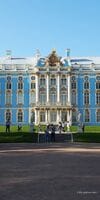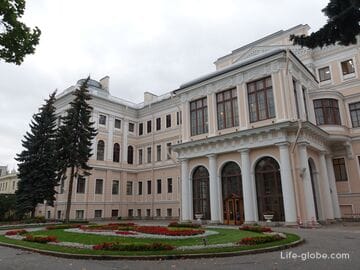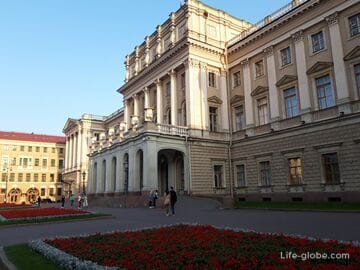The Catherine Palace is one of the largest, most famous and most visited palaces in St. Petersburg and Russia as a whole.
The palace is an object of cultural heritage of Russia and is also known as: The Great Tsarskoye Selo Palace, the Great Catherine Palace, the Grand Palace or the Old Palace.
Today, the Catherine Palace is a museum, adjacent to it is the Catherine Park, together with which the palace is a complex of the Catherine Palace and Park Ensemble, located in the former Tsarskoye Selo (now the city of Pushkin in St. Petersburg).
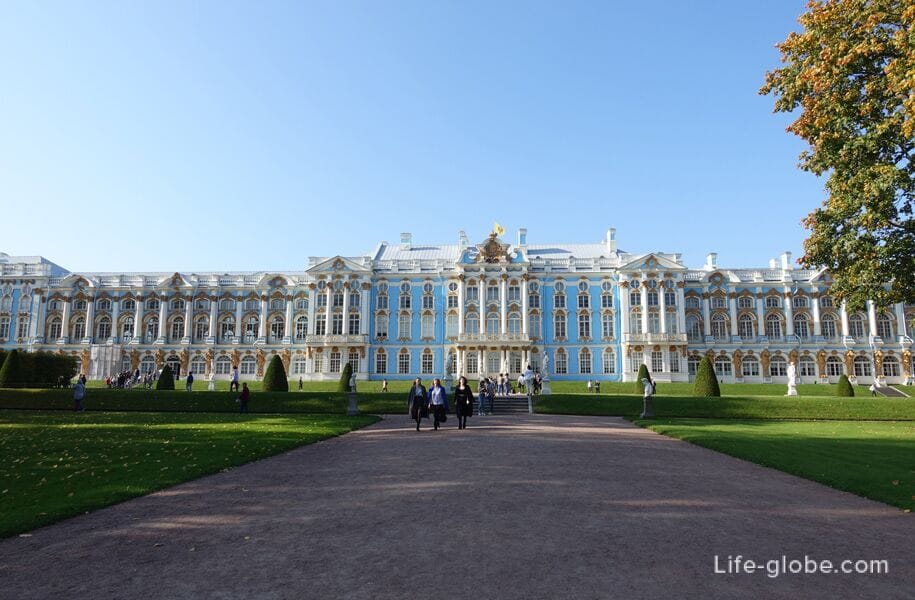
The origin and development of the palace and park ensemble in Tsarskoye Selo is associated with the liberation of the ancient Novgorod possessions near the banks of the Neva River from the Swedish Kingdom, which were occupied by the Swedes in the 17th century. The return of these territories to Russia began in 1702 with the victory in the Northern War.
On the site of the future Tsarskoye Selo there was a small estate "Saris hoff", or" Saaris moisio "(translated from Finnish - "manor on a high place", and in Russian-Sarskaya manor). On June 24, 1710, by order of Peter I, the manor was "signed off" to his future wife Ekaterina Alekseevna (the official marriage of Peter I with Catherine took place in February 1712) and included in the category of palace lands.
The palace was founded in 1717 under the direction of the German architect Johann Friedrich by order of the Empress Catherine I (wife of Peter I), after whom the palace was named.
At that time, the palace was a small stone two-story structure typical of Russian architecture of the early 18th century, which went down in history under the name "Stone Chambers of Catherine I".
Under Empress Elizabeth Petrovna (daughter of Peter I), the palace was expanded, and the old palace building was completely rebuilt. The architects Mikhail Grigoryevich Zemtsov, Andrey Vasilyevich Kvasov and his assistant, J. V. Kvasov, worked on the projects of the palace at different times. Trezzini, Sava Ivanovich Chevakinsky and chief architect of the Imperial Court F. Rastrelli.
The Ball Palace is designed in the Baroque style and admired for its size, festive facade with snow-white columns, gilded ornaments, stucco decorations, figures of Atlanteans, caryatids and lion masks, as well as powerful spatial dynamics and "picturesque" decor.
Under Catherine II, some of the palace's halls were remodeled in accordance with the then fashionable styles of ancient art and Russian classicism.
In 1817, by order of Emperor Alexander I, architect V. P. Stasov created a State Office and several adjacent rooms, decorated in a single style and dedicated to the glorification of the brilliant victories won by the Russian army in the Patriotic War of 1812.
The last chord in the enfilade of the palace was the Grand Staircase, created in 1860-1863 by I. A. Monighetti in the style of the "second Rococo".
For two centuries, Tsarskoye Selo was the official summer ceremonial imperial residence, mainly of Catherine I, Elizabeth Petrovna and Catherine II.
After the October Revolution of 1917, the palace and park ensemble was turned into a museum.
During the Great Patriotic War, the Catherine Palace underwent significant destruction and was looted; then it was restored, including according to drawings, materials, photographs and preserved fragments of decoration.
Today, the Catherine Palace is considered one of the largest in the suburbs of the Northern Capital and is a museum. The exterior has the style of the late rich Baroque with a delightful picturesque decor: white, blue and gold colors; three-dimensional and massive columns, pilasters, sculptures and other decorations of the facades of the palace, harmoniously combine with each other and give the impression of grandeur and conviviality.
The eastern facade of the palace, which is seen as the most beautiful, looks out on the regular part of the Catherine Park and runs through its entire width.
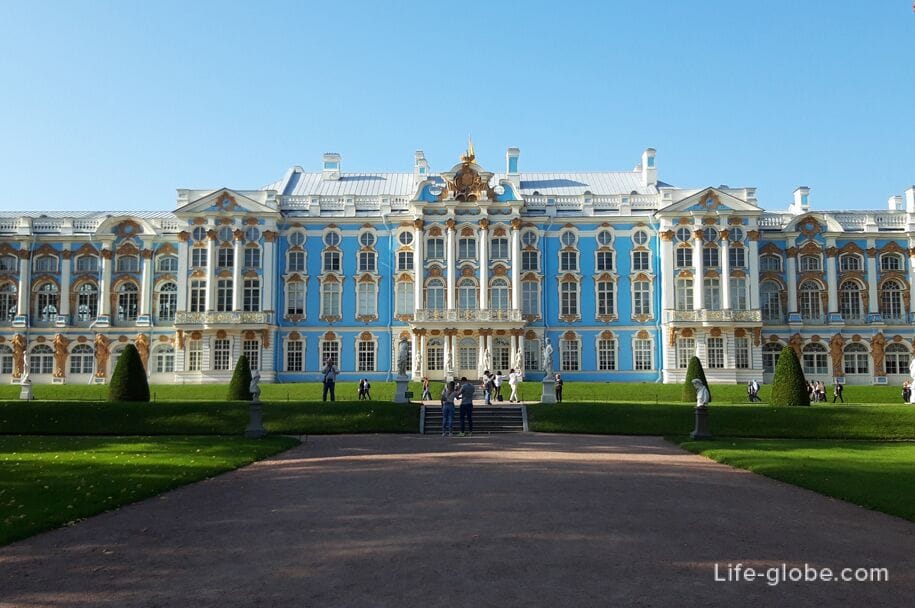
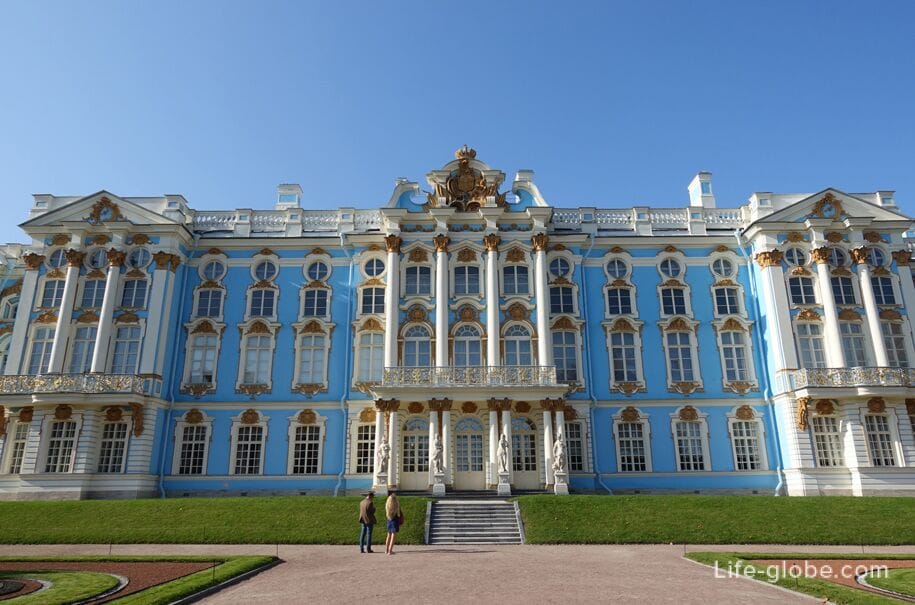
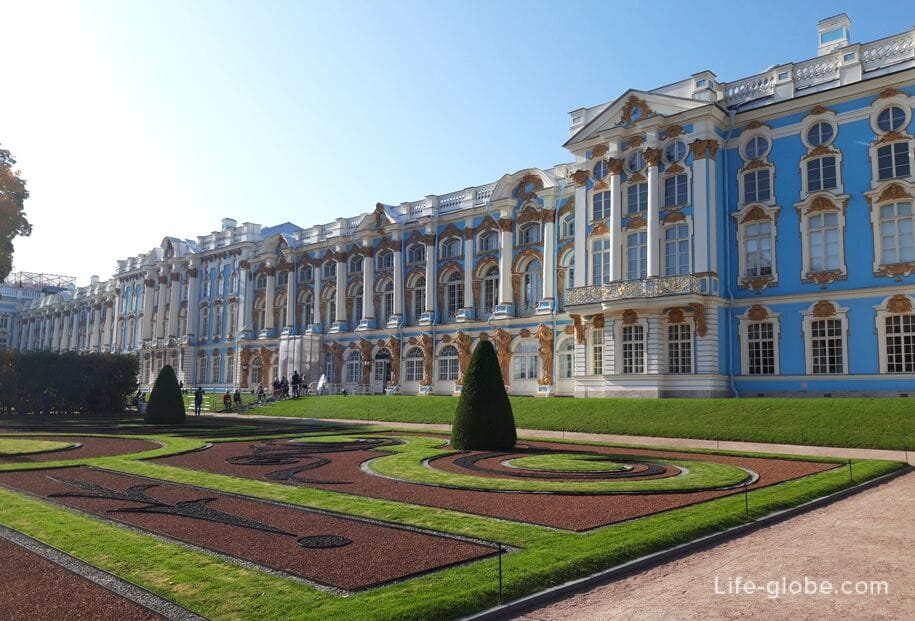
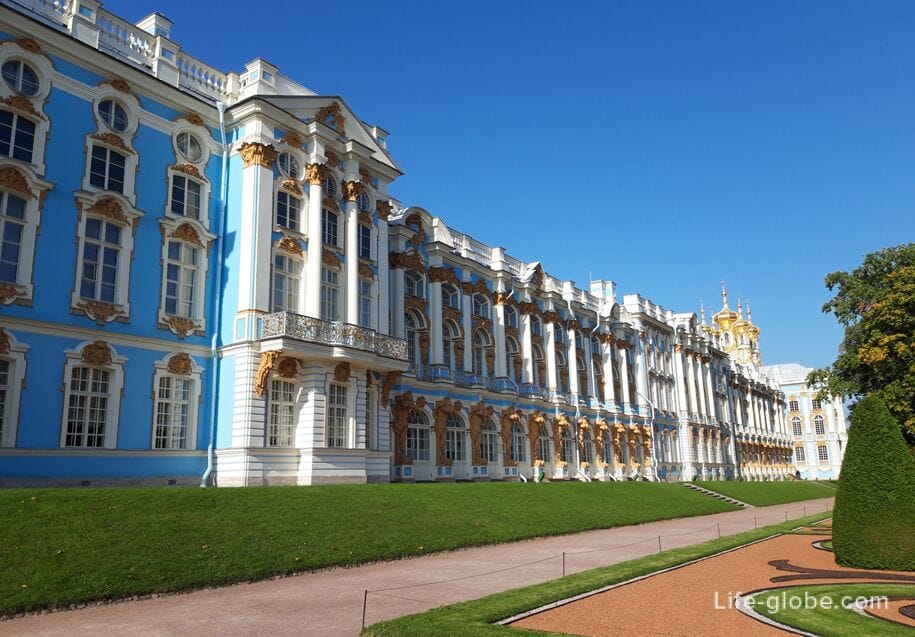
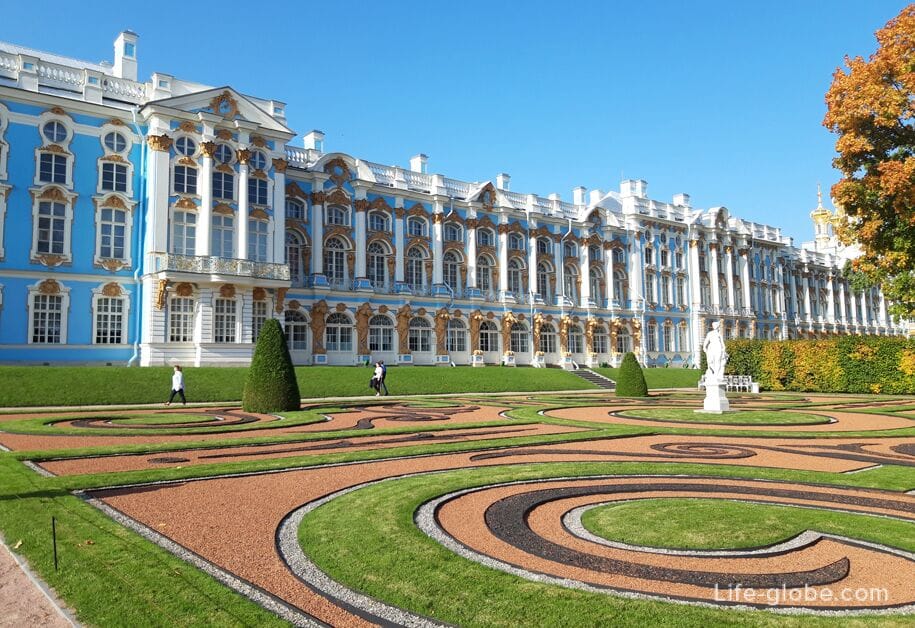
On the south side, facing the Catherine Park, there is a wing of the palace, called "Zubovsky" - after one of the favorites of the Empress Catherine II.
The wing was attached to the Grand Tsarskoye Selo Palace in 1779-1785, designed by architect Yu.M. Felten.
The interior of the wing was designed and finished by C. Cameron and D. Quarenghi.
The wing is connected to the Cold Bath Pavilion with Hanging Gardens, which is part of the Cameron Baths ensemble. More about the Cameron Baths ensemble with photos…
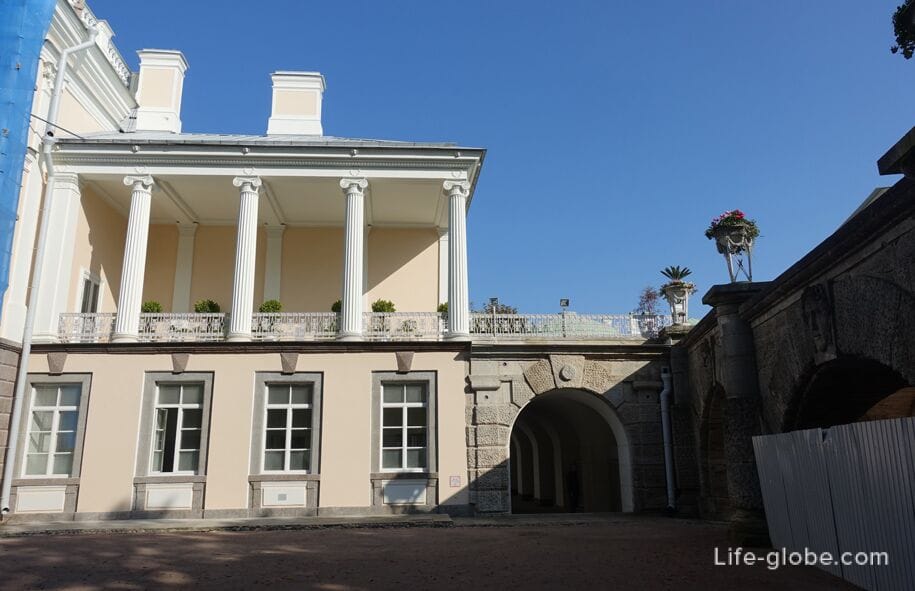
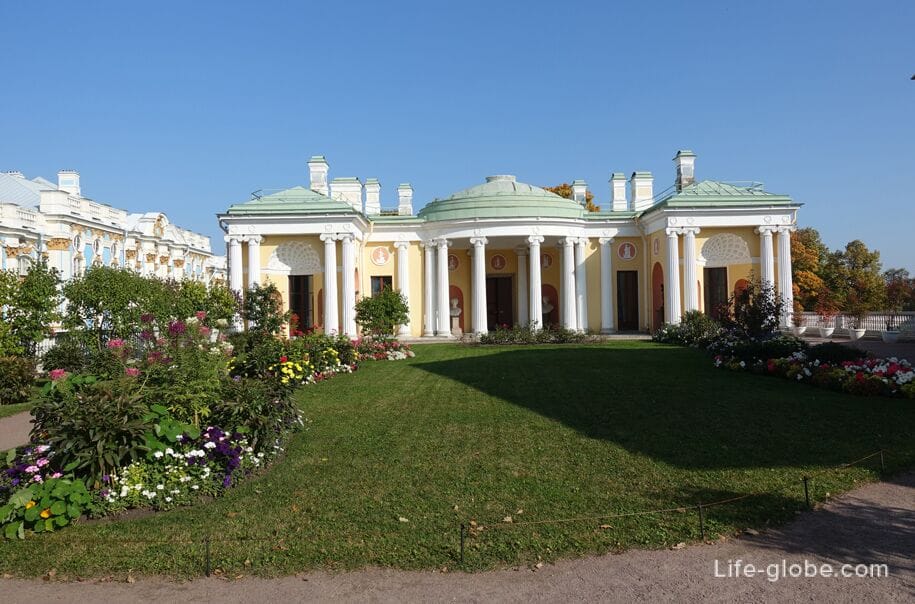
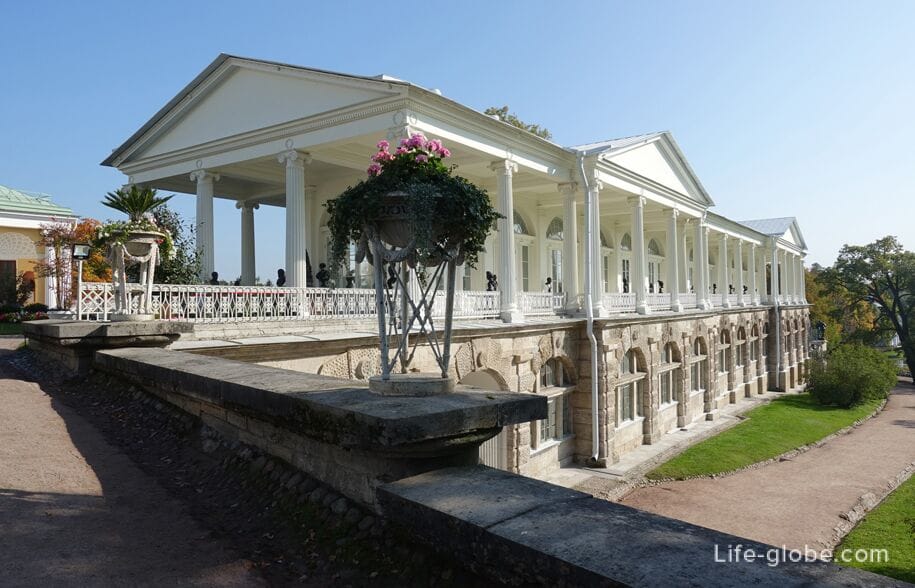
On the north side, the Catherine Palace opens onto Sadovaya Street and houses the church wing with the palace church.
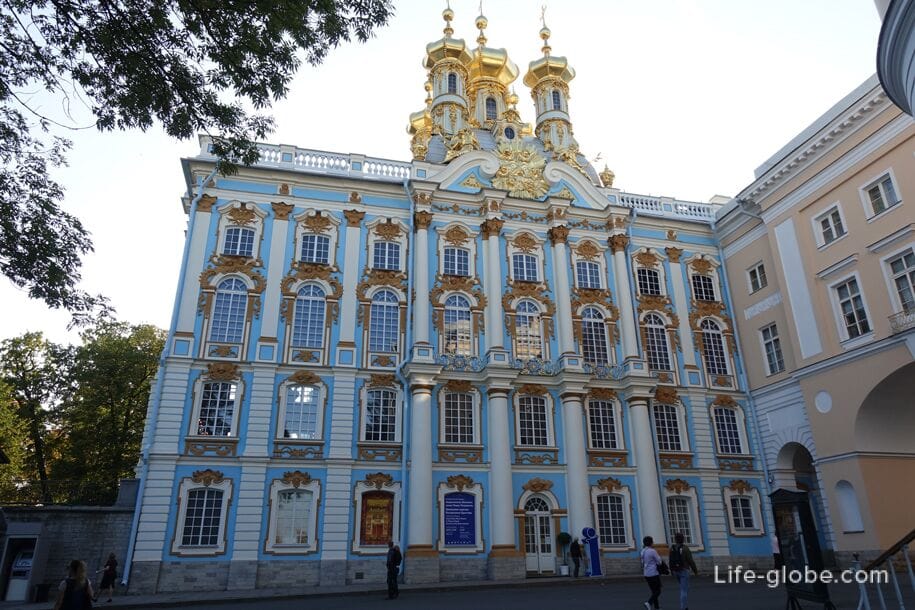
The church wing is connected by an arch with a covered corridor to another four-story wing of the palace.
The wing was built in the 1790s for the grand duchesses-daughters of Emperor Paul I.
Since 1810, by the decree of Emperor Alexander I, the Imperial Tsarskoye Selo Lyceum was founded, which it was decided to place in the northern building of the palace. For these purposes - adaptation to the needs of the educational institution, the building was rebuilt by the architect Vasily Petrovich Stasov.
The lyceum operated within the walls of the former palace wing until 1843, when the school was transferred to St. Petersburg.
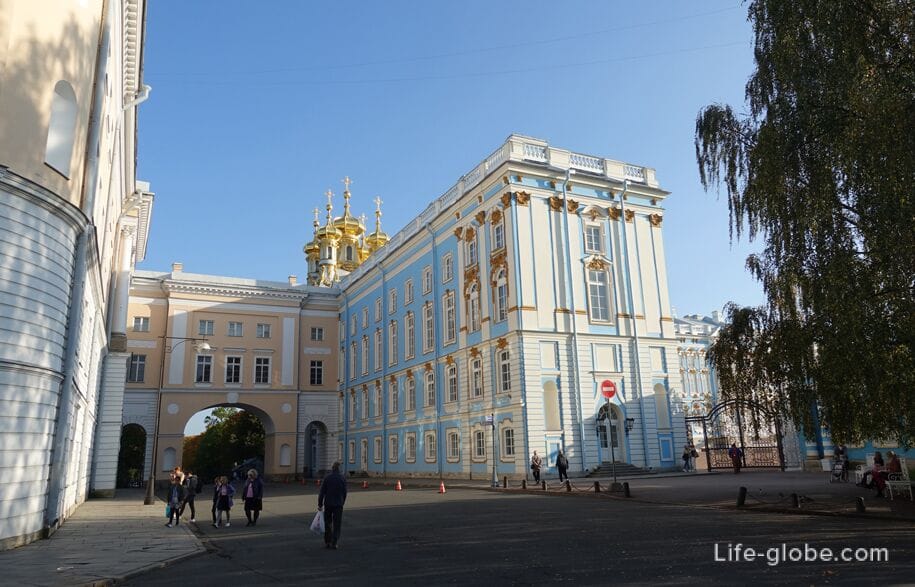

The western facade, where the main building and the wings of the palace form the Parade Ground, faces Alexander Park.
The Golden Gate, which is the main gate of the palace complex and was made in 1749, leads to the Parade Ground. The name "Golden" Gate was given due to the presence of openwork decorative gilded elements in the Baroque style. Read more about the Golden Gate with a photo...

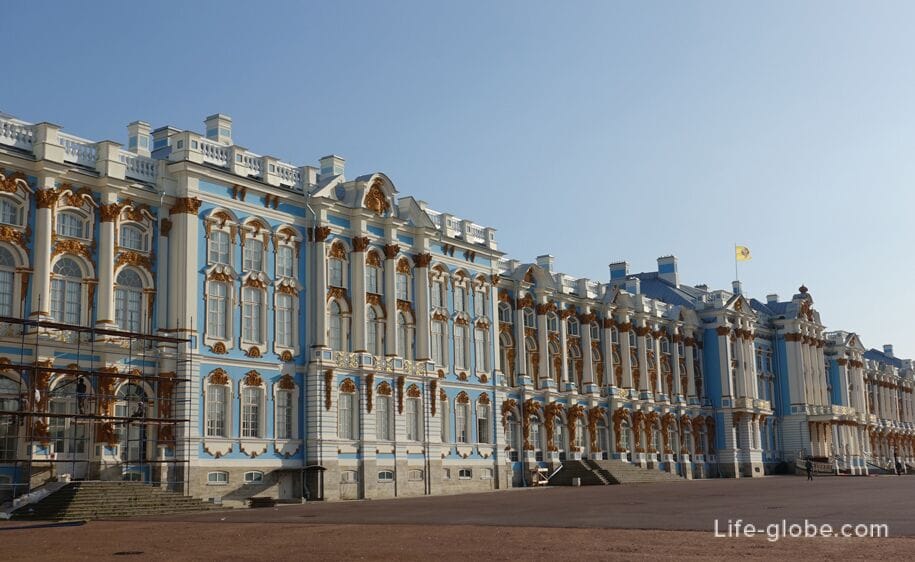
In the southwest wing is 3-star Ekaterina Hotel with a 24-hour front desk, cafe, free Wi-Fi and parking.
Each room here will provide you with air conditioning, a TV, a work desk and free toiletries.
Breakfast is included in the room rate. Link to the hotel
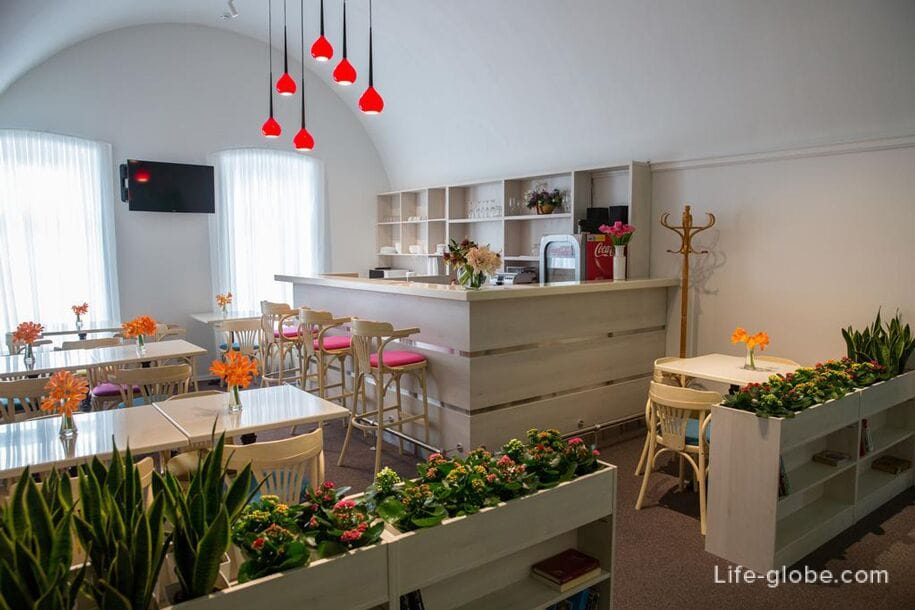
Next to the palace, on the side of Sadovaya Street, on a high pedestal, there is a bust of Francesco Bartolomeo Rastrelli - the architect who participated in the creation of the Catherine Palace.
The bust was created on the initiative of the State Museum-Reserve "Tsarskoe Selo", architect Sergei Leonidovich Mikhailov and sculptor Maria Timofeevna Litovchenko, who executed the sculpture in the tradition of ceremonial portraits of the 18th century. The iconographic material of the bust was a picturesque portrait of F. B. Rastrelli, painted by the Italian artist P. Rotary in the 1750s.
The bust was cast in bronze at the plant "Monumentskulptura" and opened on November 22, 1991.
The height of the bust is 1.2 meters, and the height of the pedestal is 2.5 meters.
Materials: bust and cartouche-bronze; pedestal-polished red granite.
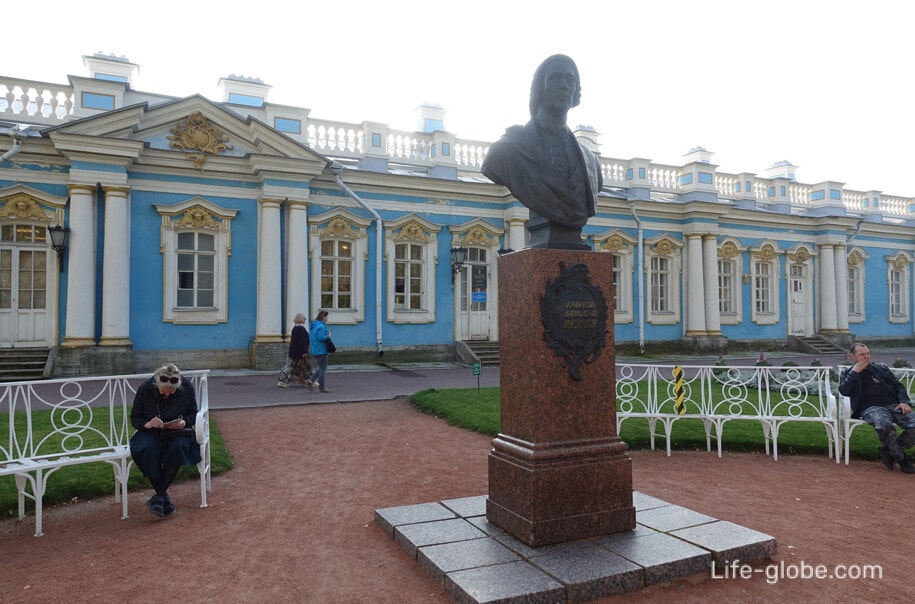
The interior of the Catherine Palace (museums)
In the palace you can visit some rooms-museums: the halls of the Catherine Palace, the palace church, the memorial museum-lyceum and temporary exhibitions. Visiting each of the museums is possible for a fee.
Halls of the Catherine Palace
When visiting the halls of the Catherine Palace, guests, as part of the tour, can walk through the restored halls of the former imperial residence, while learning the history of the palace and see some objects of decorative and applied art, furniture and works of sculpture and painting, dishes, jewelry, etc., located in the halls of the museum-palace.
You can also walk around the palace halls with an audio guide that you can download to your phone, or rent in the lobby (on the first floor) of the palace. On the first floor of the palace there are also: cafes, toilets, cloakrooms, places to relax.
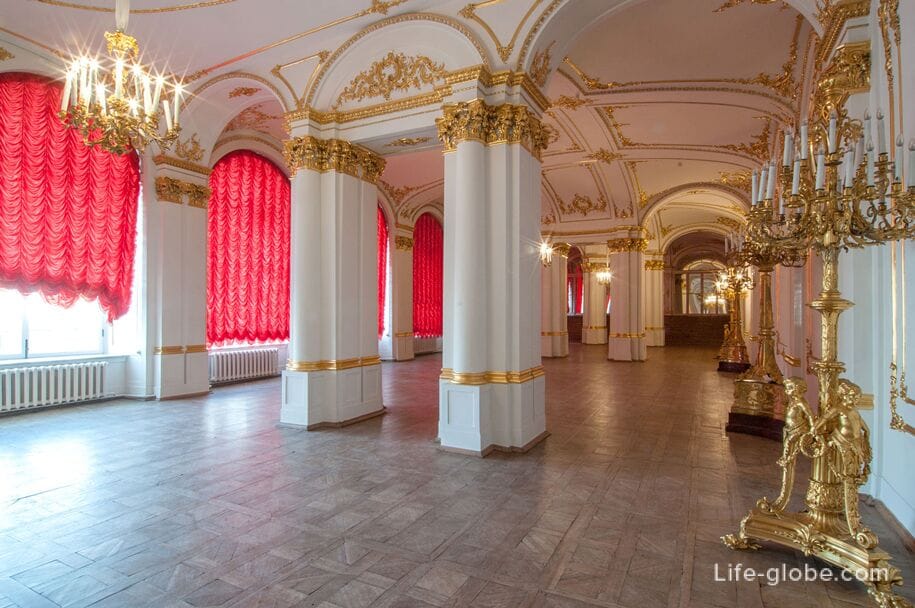
The museum halls of the palace are located on the second floor.
Among the palace halls there are magnificent state rooms decorated with mirrors, parquet, stucco, "gold" and paintings; as well as the grand staircase, the amber room, portrait and picture halls, offices, dining rooms, living rooms, private rooms of the imperial family, office rooms and a Small suite, where the permanent exhibition "Romanovs in Tsarskoye Selo"is located. Learn more about the halls of the Catherine Palace with photos and routes through the halls…
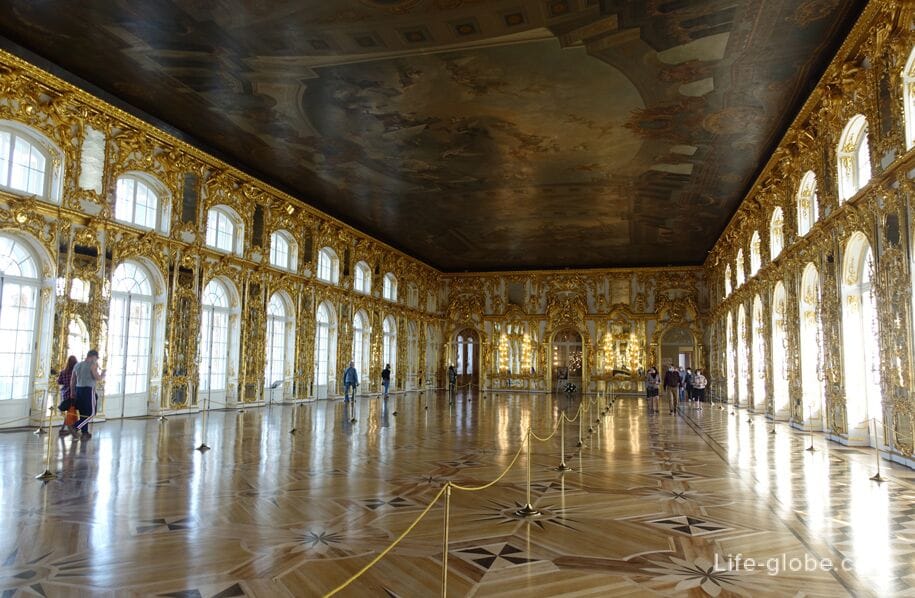
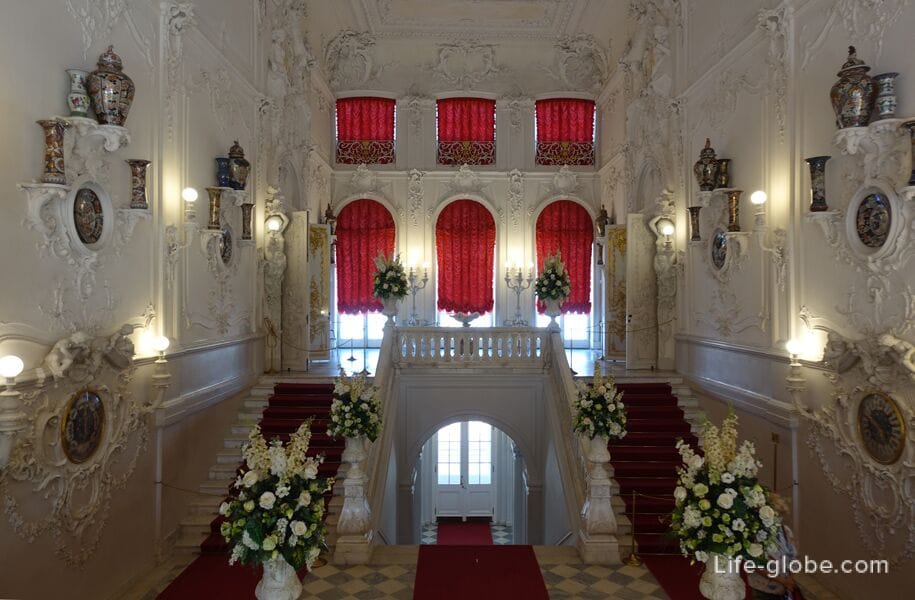
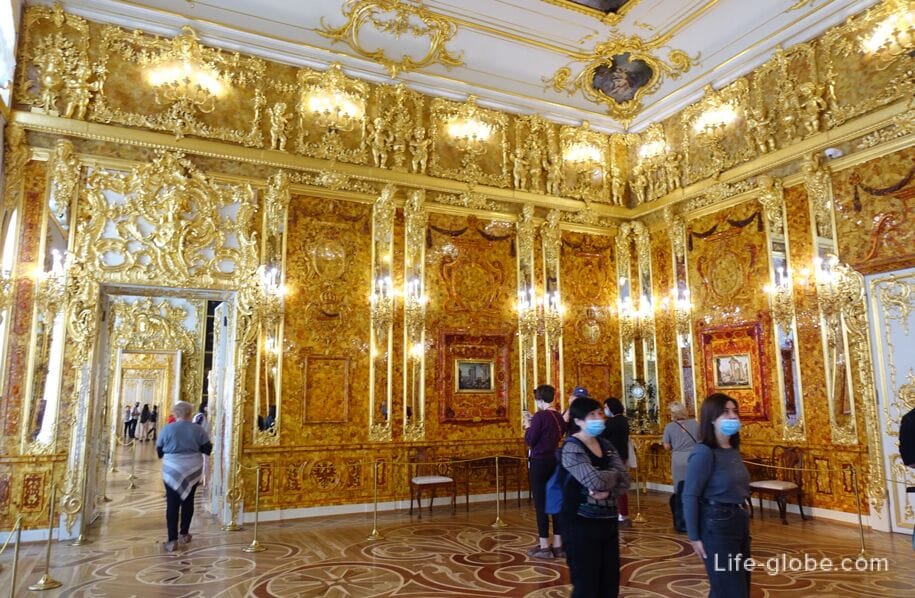
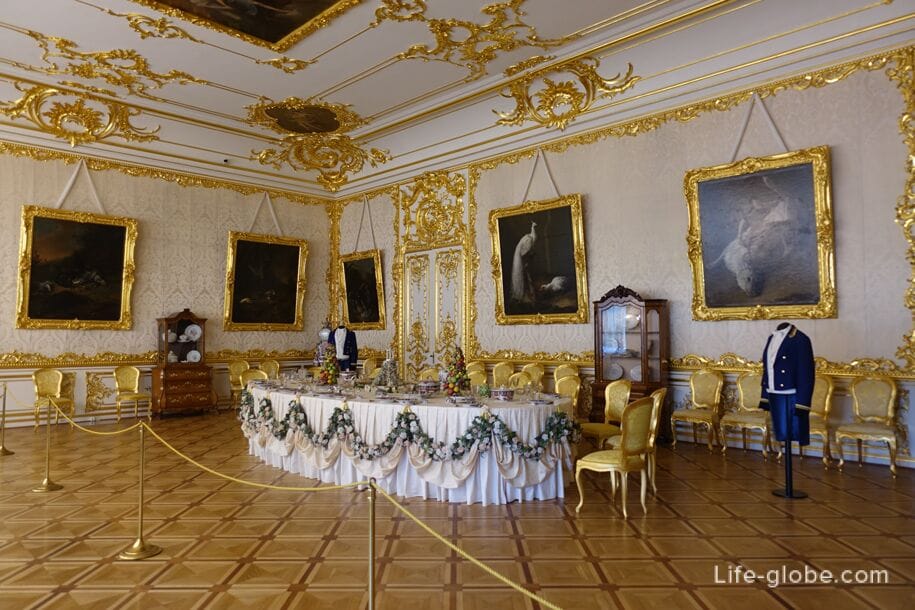

Palace Church
The Church of the Catherine Palace (Resurrection of Christ), which was the house church of the Romanovs, was laid on August 8, 1745 in the presence of the Empress Elizabeth Petrovna.
The exterior of the church is made in a characteristic secular and uniform style with the entire Catherine's Court. Against the background of the general appearance of the palace, the church is distinguished by five gilded domes. The ecclesiastical purpose of the building is also highlighted by the symbolism that adorns the wing: the figures of angels, the heads of cherubim.
The interior of the church is dazzlingly elegant and today it is a separate museum of the palace ensemble (entrance is paid, from Sadovaya Street). Learn more about the Palace Church…
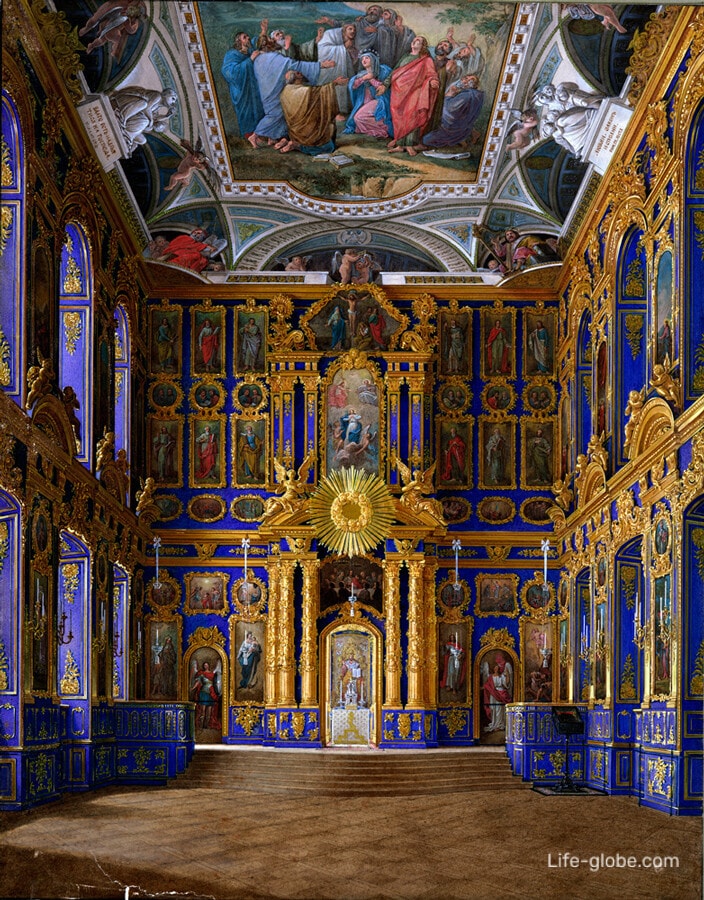
Memorial Museum-Lyceum
The Memorial Museum-Lyceum is located within the walls of the former Imperial Tsarskoye Selo Lyceum, where Alexander Pushkin was educated from 1811 to 1817.
The museum recreates the environment in which the Lyceum students of the first class lived and studied.
On the basis of archival materials, the Great Hall, the Newspaper Room, the library, classrooms, some of the students ' bedrooms, as well as the apartment of the tutor and art teacher S. G. Chirikov were restored. All these rooms can be visited in the museum-lyceum. Read more about the memorial museum-Lyceum with photos…

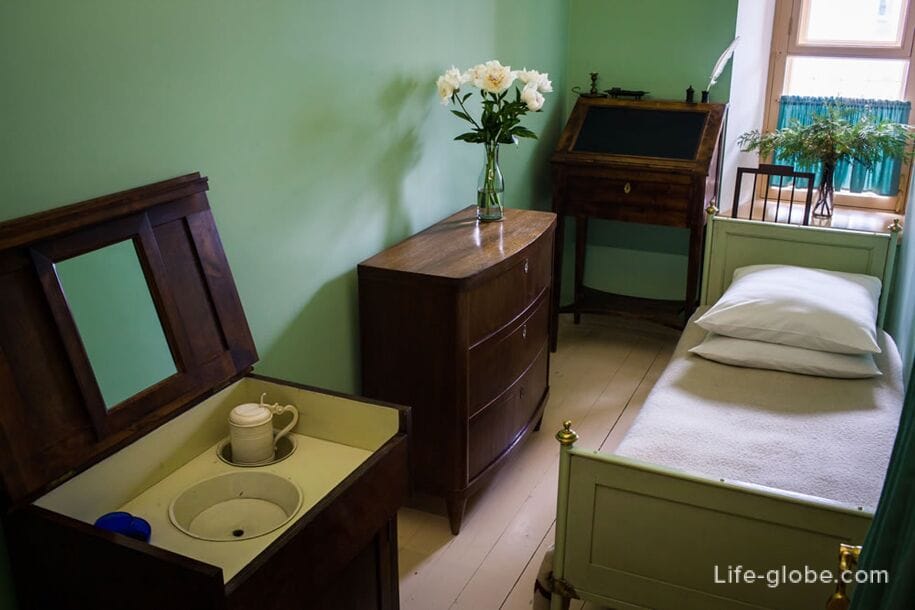
Temporary exhibitions
Temporary exhibitions are held in the premises of the first floor of the Zubovsky wing.
Practical information
The Grand Catherine Palace, together with the adjacent Catherine Park, belong to the State Museum-Reserve "Tsarskoe Selo" and are located in Pushkin (St. Petersburg), at the address: St. Petersburg, Pushkin district, Pushkin city, Sadovaya Street, 7.
There are two routes through the halls of the Catherine Palace, each of which can be visited for a fee. The cost of tickets to the halls of the palace includes the cost of a ticket to the Catherine Park of the palace.
Tickets can be purchased in advance online or at the ticket offices near the entrances to the Catherine Park.
The opening hours of the Catherine Palace, the park and temporary exhibitions, the cost of tickets, as well as the conditions for visiting and buying tickets, we recommend that you check directly on the official websiteState Museum-Reserve "Tsarskoe Selo": tzar.
Entrance to the palace church is paid separately. Tickets can be purchased at the entrance, from the side of Sadovaya Street.
The Memorial Museum-Lyceum is located at the address: 196600, Pushkin city, Sadovaya Street, house 2.
The museum is part of the museum complex "All-Russian Pushkin Museum", which is the oldest Pushkin Museum in Russia.
For more information about the Memorial Museum-Lyceum and other museums of the museum complex, including opening hours, ticket prices, visiting conditions, etc., please visit the official website of the museum complex "All-Russian Pushkin Museum": museumpushkin.
You can visit Tsarskoye Selo with one of the excursions
In Pushkin, you can stay
The 5-star Pevcheskaya Tower Hotel features restaurants, a bar, a rooftop observation deck, free Wi-Fi and parking.
Breakfast is included in the room rate. Link to the hotel

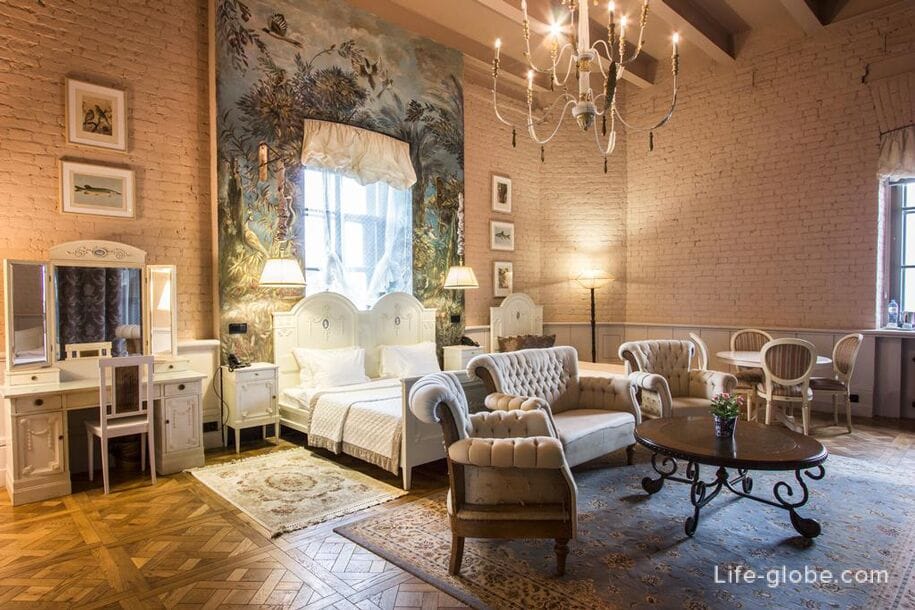
The 5-star luxury spa hotel "Tsar Palace Luxury Hotel & SPA"is located in a historic building.
The hotelfeatures a spa area with a swimming pool, a hammam, a salt sauna, a snow fountain, steam baths and a gym; free Wi-Fi, a 24-hour front desk, 2 restaurants, a lobby bar, private parking and meeting and conference rooms.
The rooms are equipped with climate control, a minibar, a safe and a private bathroom.
A buffet breakfast is included in the room rate. Link to the hotel
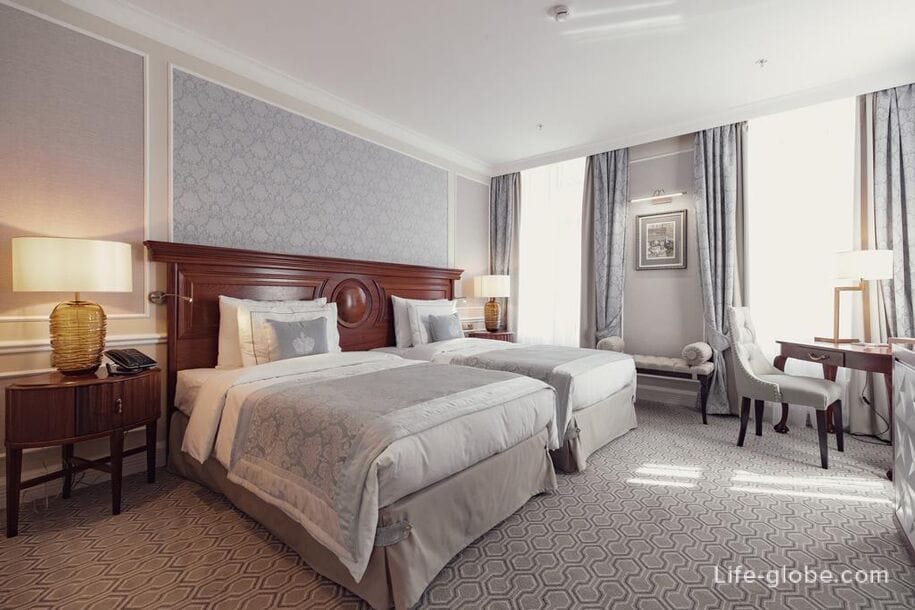
All accommodation facilities in St. Petersburg, including in the city center and in Pushkin, can be viewed and booked here




